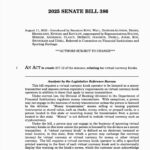Recent Divergence in Whale Activity on Binance
Recent on-chain data from Binance has unveiled a notable disparity in whale activity between Bitcoin (BTC) and Ethereum (ETH), reflecting varying market sentiments as investor caution escalates.
While significant BTC holders display mixed actions, ETH whales are following a cohesive approach, consistently withdrawing funds from the exchange. This divergence underscores the distinct ways large investors are handling the two leading cryptocurrencies.
Insights from On-Chain Analysis
On-chain analyst Murphy recently pointed out on X (formerly Twitter) that between August 13 and September 3, Binance’s Bitcoin balance increased by 7,709 BTC. This implies that more coins were deposited than were withdrawn during this time.
“During this period, the amount of BTC bought and withdrawn from the exchange was less than the amount transferred in with the intention to sell,” Murphy noted.
Two groups of whales have emerged: one group, involved in single transfers between $10–100 million, consistently deposited BTC, while the other group, dealing in transfers exceeding $100 million, withdrew coins. Their opposing movements have created a tug-of-war, with selling pressure currently being the dominant factor.
“Back in April this year, both groups were aligned in withdrawing BTC. But since August 13, divergence has emerged,” the analyst added.
ETH Whales Aligning Their Strategies
In stark contrast, Binance recorded a significant outflow of 1.616 million ETH during the same timeframe. The same two whale groups—the $10 million to $100 million and the above $100 million cohorts—worked in tandem, withdrawing ETH from Binance.
This uniform behavior diminishes potential selling pressure and suggests a preference among large investors for ETH over BTC in the current market landscape.
“When prices fall, there is indeed demand entering the market, although it may not necessarily mean more funds buying ETH. However, looking at larger-scale funds, their intentions are clearly more consistent toward ETH, or in other words, they favor ETH more. Meanwhile, BTC has divergences and clashes among large holders, leading to an inability to quickly alleviate the potential selling pressure within the exchange,” Murphy emphasized.
Market Conditions and Accumulation Trends
Consequently, the split among BTC whales may indicate indecision or a hedging strategy amidst volatile conditions. Conversely, ETH’s unified withdrawals and declining exchange balance are aligned with signals of accumulation, implying confidence in its long-term value.
Further on-chain indicators support this perspective. Analyst Cas Abbé noted that Ethereum’s Exchange Flux Balance has dropped into negative territory for the first time on record.
Data reveals net ETH outflows across major trading platforms, with billions being withdrawn. This contraction in available supply occurs even as prices hover above $5,500.
Abbé explained that historically, such negative balances have indicated structural shifts: selling pressure diminishes, long-term holders accumulate supply, and market peaks typically form only after this trend sharply reverses—not at its inception.
“The signal is clear: ETH isn’t being positioned to sell, it’s being positioned to hold. This could define Ethereum’s next leg in the cycle,” he remarked.
Increased Demand from Whales and Institutions
As selling pressure lessens, buy-side demand concurrently rises. Data from blockchain analytics firm Lookonchain revealed that whales and institutions acquired approximately 218,750 ETH (around $942.8 million) within just two days.
Among the most significant transactions, Bitmine purchased 69,603 ETH (≈$300 million) from BitGo and Galaxy Digital. Additionally, five newly formed wallets collectively bought 102,455 ETH (≈$441.6 million) via FalconX.
Analyst Ted Pillows observed a similar trend, highlighting that three newly created wallets acquired approximately $148.9 million worth of ETH. The ongoing accumulation by whales reinforces the broader trend of large investors consolidating their Ethereum positions.
Coupled with the latest institutional purchases, the data indicates sustained confidence among affluent players, even as overall market sentiment remains wary.



















